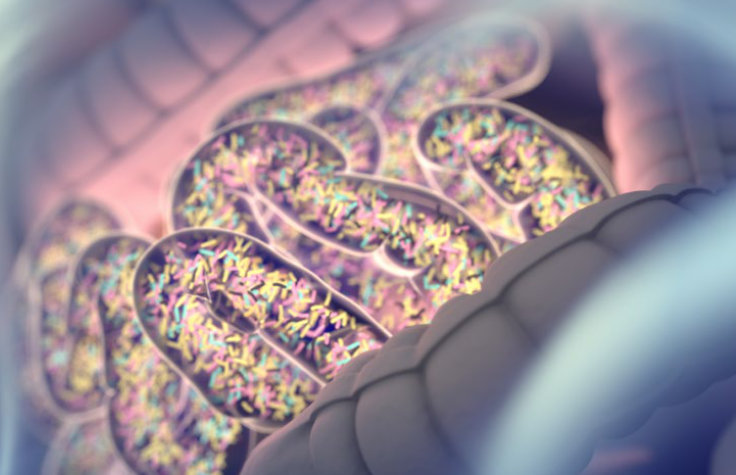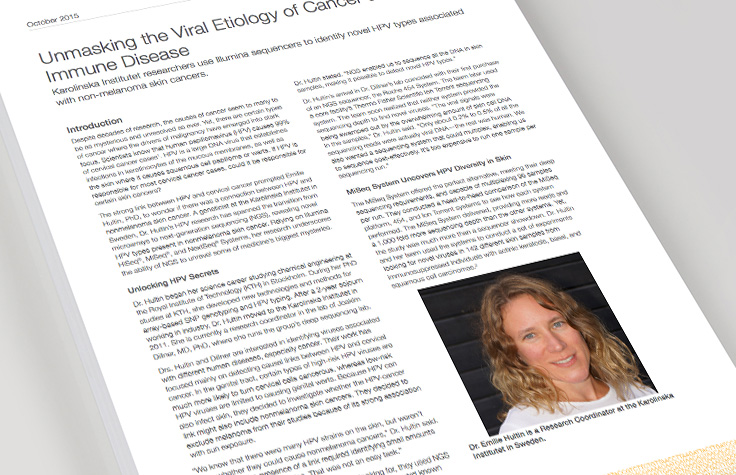癌症微生物组学研究
微生物群落会影响宿主的免疫应答
宿主体内的微生物会影响癌症进展和治疗有效性。饮食和药物会破坏微生物组的多样性,微生物组中的关键物种会对宿主的免疫力产生局部或全局的影响。1,2
未来的治疗方法有可能会结合现有的癌症疗法与其他能促进有益微生物生长或消除有害微生物的方法。随着基于NGS的研究继续探索宿主与微生物组的相互关系,Illumina正在努力开发可加强该领域并为其带来前景的基因组技术。
癌症免疫疗法与微生物组的作用
现代癌症免疫疗法的有效性受肠道微生物组组成的影响。
微生物可能对癌症进展产生不同的影响
影响细胞因子释放和炎症的微生物可能对肿瘤生长或免疫系统抑制肿瘤生长的能力产生积极影响或消极影响。
NGS可对不同背景下的微生物群落进行分析,这对于确定开发新癌症治疗方法时靶向的物种或条件至关重要。
使用NGS方法研究微生物组在癌症中的作用
NGS具备分析复杂微生物群落的能力,有助于揭示能够促进癌症或加强药物疗效的宿主-微生物相互作用的新机制。
NGS的高通量和成本降低促进了以整个微生物群落基因组为研究对象的宏基因组学研究。
可提供微生物组相关重要遗传信息的NGS方法:
鸟枪法宏基因组测序
一种DNA测序方法,能够对复杂微生物组样本中存在的所有生物体的所有基因进行全面的检测。
16S rRNA测序
一种16S核糖体RNA基因测序方法,用于鉴定和比较给定样本中的细菌。
微生物宏转录组学
对复杂样本中的一组微生物编码的所有RNA进行分析。

癌症微生物组分析工作流程
NGS具有极高的通量和灵敏度,可鉴定单个样本中的数千种微生物。
点击下方的查看工作流程各步骤所使用的产品。
Nextera XT Library Prep Kit
制备细菌、病毒和其他微生物的可直接用于测序的文库,用于分析转录组和宏转录组信息。
Illumina Stranded Total RNA Prep with Ribo-Zero Plus简便、经济、可扩展的总RNA分析解决方案。
Illumina DNA Prep
一个快速、集成的工作流程,适合广泛的应用,从人类全基因组测序到扩增子、质粒和各种微生物。
16S Metagenomics
利用Illumina审核的GreenGenes分类数据库对16S rRNA靶向扩增子read进行分类学分类。
DRAGEN Metagenomics Pipeline进行read物种分类,并提供单个样本和汇总报告。

更多资源
参考文献
- Zama D, Biagi E, Masetti R, et al.Gut microbiota and hematopoietic stem cell transplantation: where do we stand? Bone Marrow Transplant.2017;52 (1):7-14.
- Schwabe R, Jobin C. The microbiome and cancer.Nat Rev Cancer.2013;13 (11):800-812.
- Franzosa EA, Hsu T, Sirota-Madi A, et al.Sequencing and beyond: integrating molecular 'omics' for microbial community profiling.Nat Rev Microbiol.2015;13(6):360-372.

